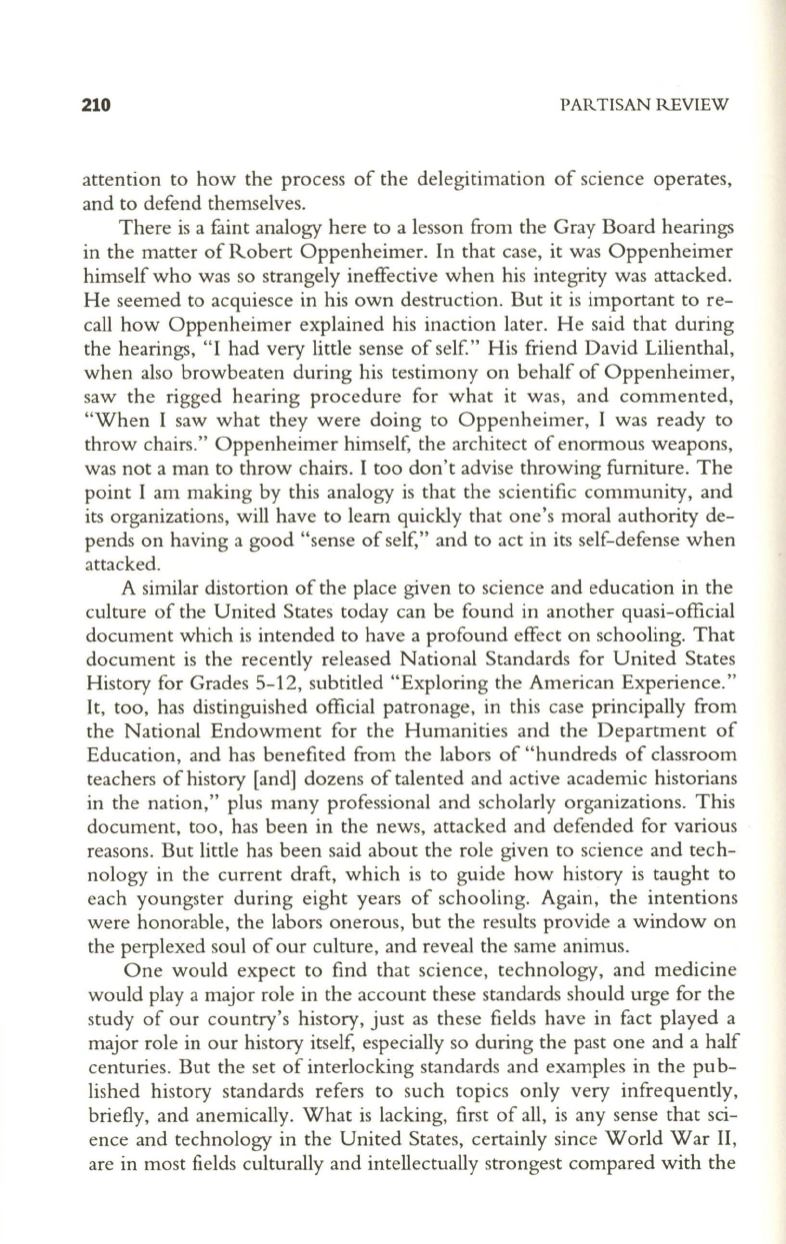
210
PARTISAN REVIEW
attention to how the process of the delegitimation of science operates,
and to defend themselves.
There is a faint analogy here to a lesson from the Gray Board hearings
in the matter of Robert Oppenheimer. In that case, it was Oppenheimer
himself who was so strangely ineffective when his integrity was attacked.
He seemed to acquiesce in his own destruction. But it is important to re–
call how Oppenheimer explained his inaction later. He said that during
the hearings, "I had very little sense of self" His friend David Lilienthal,
when also browbeaten during his testimony on behalf of Oppenheimer,
saw the rigged hearing procedure for what it was, and commented,
"When I saw what they were doing to Oppenheimer, I was ready to
throw chairs." Oppenheimer himself, the architect of enormous weapons,
was not a man to throw chairs. I too don't advise throwing furniture. The
point I am making by this analogy is that the scientific community, and
its organizations, will have to learn quickly that one's moral authority de–
pends on having a good "sense of self," and to act in its self-defense when
attacked.
A similar distortion of the place given to science and education in the
culture of the United States today can be found in another quasi-official
document which is intended to have a profound effect on schooling. That
document is the recently released National Standards for United States
History for Grades 5-12, subtitled "Exploring the American Experience."
It,
too, has distinguished official patronage, in this case principally from
the National Endowment for the Humanities and the Department of
Education, and has benefited from the labors of "hundreds of classroom
teachers of history [and] dozens of talented and active academic historians
in the nation," plus many professional and scholarly organizations. This
document, too, has been in the news, attacked and defended for various
reasons. But little has been said about the role given to science and tech–
nology in the current draft, which is to guide how history is taught to
each youngster during eight years of schooling. Again, the intentions
were honorable, the labors onerous, but the results provide a window on
the perplexed soul of our culture, and reveal the same animus.
One would expect to find that science, technology, and medicine
would playa major role in the account these standards should urge for the
study of our country's history, just as these fields have in fact played a
major role in our history itself, especially so during the past one and a half
centuries. But the set of interlocking standards and examples in the pub–
lished history standards refers to such topics only very infrequently,
briefly, and anemically. What is lacking, first of all, is any sense that sci–
ence and technology in the United States, certainly since World War
II,
are in most fields culturally and intellectually strongest compared with the


